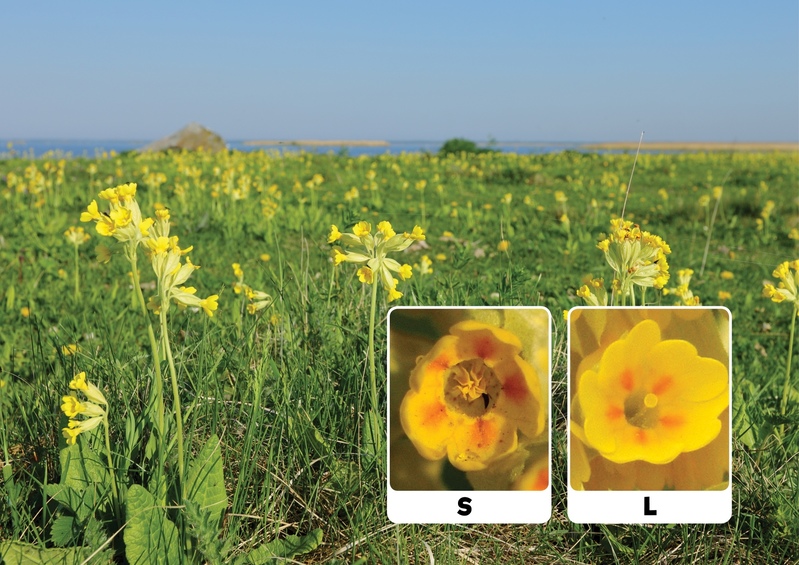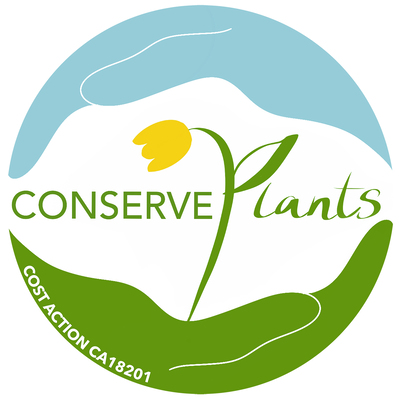Thursday, 8 April 2021 COST Action Conserve Plants - This Spring Europe is Looking for Cowslips
This spring a group of scientists and nature observers around Europe invite everybody to take part in the biggest cowslip observation campaign Looking for Cowslips.
The idea of a pan-European cowslip flower observation stems from a popular science campaign, which started in 2019 in Estonia, where citizen scientists took a close look at the flowers of more than 200,000 cowslips. The campaign yielded novel insight both for applied and fundamental research.

Foto: Kaarel Kaisel
The idea is easy: people go into nature, find a specific yellow spring flower – the cowslip (Primula veris) – look inside the flower and send the findings and some photos via webpage www.cowslip.science to researchers. After the blooming period is over, the scientists analyse the data and give feedback about the findings to all participants.
»Taking part in this scientific research is easy and fun, a combination not so often heard,« commented Dr Tsipe Aavik, the lead researcher of the cowslip project. Everybody can participate because it does not need a special education and the organisers have designed web-platforms to make the process easier for the people. »In Estonia, a lot of families and children take part in this campaign we started here in 2019. During the pandemic, it is one recreational action people still can do in most parts of Europe – go into the wild. Why not add some extra fun activities like looking inside flowers and citizen science into the mix,« added Tsipe Aavik.
In Estonia during the spring of 2019 and 2020, the team of scientists and experts held a public campaign to collect an unprecedented amount of data about cowslip flowers. The results were surprising and demonstrate effectively how all people can contribute to fundamental science. The results are now published in the Journal of Ecology.

A study coordinated by the ecologists of the University of Tartu and the Estonian Fund for Nature aimed to examine whether drastic landscape change, such as the loss of traditionally managed grasslands, has led to deviations in the morph balance of cowslip flowers. About half of cowslips have short-styled flowers (i.e. S-morphs), while the other half of individuals produce long-styled flowers (L-morphs). Recent evidence indicates that the loss of grasslands may shake the balance of different flowers with consequences for cowslip viability. Firstly, the data gathered in Estonia revealed a systematic dominance of short-styled morphs over long-styled morphs. Secondly, morph frequencies were more likely to deviate in smaller populations. Deviations increased in landscapes with higher human population density.
The findings still need to be examined further and the idea of a pan-European campaign blossomed. In order to collect data across Europe, the ecologists decided to implement the same citizen science approach. A specifically designed web platform www.cowslip.science facilitates an easy upload of data. “In addition, the task and importance of the cowslip observation campaign were explained in detailed guidelines, numerous videos, social media, and other communication platforms,” commented Tsipe Aavik, the lead researcher of the cowslip project.
This year the campaign spreads across Europe with the help of local partners. »We are very delighted that we have managed to get many schools, universities, research groups, NGOs, and other organisations interested in helping with collecting cowslip data on such an unprecedented scale,« commented Tsipe Aavik. »Even though the first discoveries on cowslip flower morphs were made already by the evolutionary biologist Charles Darwin more than 150 years ago, data obtained in the citizen science campaign helps us add novel aspects to this fascinating topic with a long history of research.«
The campaign still looks for partners who want to participate. At this point the cowslip observations campaign is underway in Estonia, Germany, United Kingdom, Switzerland, Slovenia, Slovakia, Croatia, Bulgaria, Sweden, Italy, Latvia, Lithuania, Ireland, Greece, Portugal, Poland, Russia, Denmark, Finland, Hungary, Ukraine, Macedonia, Belgium, the Netherlands, and Czechia.
The campaign is supported also by the COST Action ConservePlants, which brings together botanists from more than 40 European and other nearby countries and is funded by the European Union. The Action chair Živa Fišer from the University of Primorska, explains: »The goal of the project ConservePlants is to connect European and other researchers, as well as all others who strive to save endangered plant species with different approaches. The approach of citizen science is becoming increasingly important in the research of serious scientific issues, which has also been demonstrated in the aforementioned campaign in Estonia. This is why we are happy to join the initiative of our Estonian colleagues.«
In Slovenia, the campaign is coordinated by the Faculty of Mathematics, Natural Sciences and Information Technologies of the University of Primorska and the Botanical Garden of the University of Ljubljana. The campaign is also accompanied by other activities, such as the preparation of educational materials, short videos and promotion through social networks and other media.
- Dr. Živa Fišer, local coordinator for Slovenia, University of Primorska;
- Dr. Blanka Ravnjak, local coordinator for Slovenia, Botanical Garden of the University of Ljubljana; blanka.ravnjak@gmail.com
- Dr. Tsipe Aavik, leader of the campaign Looking for Cowslips, head researcher, Institute of Ecology and Earth Sciences, University of Tartu; tsipe.aavik@ut.ee
- Kertu Hool, communication specialist, Institute of Ecology and Earth Sciences, University of Tartu; kertu.hool@ut.ee
Read more on this web page.






